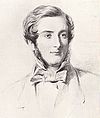User:The wub/Portal
| Highlights | Explore | Get involved |

The United Kingdom of Great Britain and Northern Ireland (usually shortened to the United Kingdom, the UK or - informally - Britain) is a country and sovereign state lying north-west of the continent of Europe. It occupies all of the island of Great Britain and the north-east of the island of Ireland, sharing a border with the Republic of Ireland. The United Kingdom is bounded by the Atlantic Ocean, and its ancillary bodies of water, including the North Sea, the English Channel, the Celtic Sea, St George's Channel, and the Irish Sea. It is linked to France and Continental Europe by the Channel Tunnel.
The United Kingdom is a constitutional monarchy composed of four constituent countries: England, Scotland, Wales and Northern Ireland. The current monarch is Queen Elizabeth II, who is also the Queen and Head of State of fifteen other Commonwealth Realms, including Canada, Australia and New Zealand. The Crown Dependencies of the Channel Islands and the Isle of Man form a federacy with the United Kingdom collectively known as the British Islands. The UK also has fourteen overseas territories, remnants of the British Empire which at its height encompassed a quarter of the world's surface and population.
Although Britain was the foremost great power during the 19th century, and a superpower in the early 20th, the economic cost of two world wars and the decline of its empire in the latter half of the 20th century diminished its status in global affairs. However, as a permanent member of the United Nations Security Council, a nuclear power, a member of the G8, the world's fifth largest economy, and having the third highest defence spending, the UK remains an important political, economic and military world power. It is a member of the European Union and the Commonwealth of Nations.
Featured article
The Webley Revolver was, in various marks, the standard-issue service pistol for the armed forces of the United Kingdom, the British Empire, and the Commonwealth from 1887 until 1963. The Webley is a top-break revolver with automatic extraction; breaking the revolver open for reloading also operates the extractor, removing the spent cartridges from the cylinder. The Webley Mk I service revolver was adopted in 1887, but it was a later version—the Mk IV—which rose to prominence during the Boer War of 1899–1902. The Mk VI, introduced in 1915 during World War I, is perhaps the best-known model. Webley service revolvers are among the most powerful top-break revolvers ever produced, firing the .455 Webley cartridge. Although the .455 calibre Webley is no longer in military service, the .38/200 Webley Mk IV variant is still sporadically in use as a police sidearm in a number of countries. (Full article...)
Featured biography
Clements Markham (1830–1916) was a British geographer, explorer and writer. He was secretary of the Royal Geographical Society (RGS) between 1863 and 1888, and later served as the Society's president for a further 12 years. In the latter capacity he was mainly responsible for organising the National Antarctic Expedition of 1901–04, and for launching the polar career of Robert Falcon Scott. The main achievement of Markham's RGS presidency was the revival at the end of the 19th century of British interest in Antarctic exploration, after a 50-year interval. All his life Markham was a constant traveller and a prolific writer, his works including histories, travel accounts and biographies. He authored many papers and reports for the RGS, and did much editing and translation work for the Hakluyt Society, of which he also became president. He received public and academic honours, and was recognised as a major influence on the discipline of geography, although it was acknowledged that much of his work was based on enthusiasm rather than scholarship. Among the geographical features bearing his name is Antarctica's Mount Markham, named for him by Scott in 1902. (Full article...)
Did you know...
Featured picture

The Great Court of the British Museum was reopened in 2000 by Queen Elizabeth II after its redevelopment. The tesselated glass roof was designed by architects Foster and Partners and covers the entire court, making it the largest covered square in Europe.



